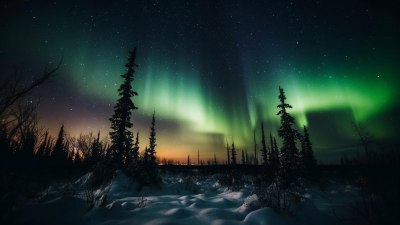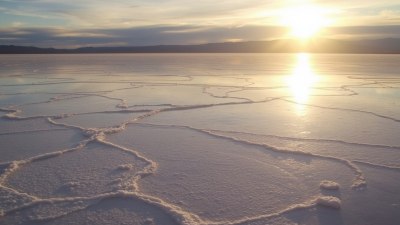Learning to Identify Local Snails and Slugs on Nature Walks
Discover how to identify local snails and slugs on your nature walks with tips and guidelines.

Image created with Flux Schnell
If you're a nature enthusiast looking to enhance your experience during walks, learning to identify local snails and slugs can be an enjoyable and educational pursuit. These gastropods, often overlooked, play essential roles in ecosystems and offer insights into biodiversity and environmental health. Whether you're strolling through a lush forest, wandering along a wetlands area, or exploring your backyard, taking the time to study these fascinating creatures can deepen your appreciation for the natural world.
Understanding Snails and Slugs
Snails and slugs are mollusks belonging to the class Gastropoda, distinguished primarily by their external or internal shells. Snails possess coiled shells while slugs lack a prominent shell, relying instead on their soft bodies for protection. These creatures are found in various habitats, from gardens to forests, actively contributing to the ecosystem's balance. They primarily feed on decaying organic matter, which helps recycle nutrients and promotes soil health.
Common Local Species
Familiarizing yourself with the common local species of snails and slugs can enhance your nature walks significantly. Here are some species you might encounter:
- Common Garden Snail (Cornu aspersum): Recognizable by its spiraled shell, this species is commonly found in gardens.
- Eastern Tiger Swallowtail Slug (Limacus maculatus): A notable slug with dark spots, often seen on moist soil.
- White-lipped Snail (Cepaea nemoralis): Characterized by its colorful shell that can vary in hue, often spotted in grasslands.
- Banana Slug (Ariolimax dolichophallus): An iconic slug with a bright yellow body, commonly found in the Pacific Northwest.
Identifying Snails
Identifying snails can be straightforward if you know what to look for. Start by examining the shell, as its shape, color, and texture can provide valuable clues. Here are key characteristics to consider:
- Shell Shape: Observe whether the shell is spiraled (for snails) or absent (for slugs).
- Coloration: Take note of color patterns, including stripes and spots, to help with identification.
- Size: Measure the shell's size, as different species vary significantly.
Identifying Slugs
Identifying slugs may initially seem challenging due to their lack of shells. However, various features can aid in distinguishing species:
- Body Color: Slugs come in various colors, including shades of brown, grey, and even yellow.
- Body Texture: Look for smooth or bumpy textures, as some species are notably slimy while others have a more textured feel.
- Size and Shape: Some slugs are elongated while others are squat, and their size can also vary.
Habitat Identification
Understanding the habitat preferences of snails and slugs can guide you during your walks. Snails favor damp environments, which aids their skin's moisture retention. Look for them under leaves, rocks, and decaying wood. Slugs also thrive in moist areas and are often found in gardens, forests, and meadows. Rainy days are particularly fruitful times for spotting these creatures as they come out from hiding.
Behavioral Patterns
Observing the behavior of snails and slugs offers further clues for identification. Snails are generally more active in the early morning or after rainfall, while slugs may emerge at night. Many gastropods are great at camouflage, blending with their environment, so patience is essential when searching for them.
Tools for Identification
Bottom line: experiencing the joy of discovering local snails and slugs can be enhanced by the right tools. Here are some recommended tools to assist in your identification:
- Field Guides: Carry a field guide specific to your region that details local gastropod species.
- Camera: Photographing specimens can help with identification later, and sharing images can aid in community science efforts.
- Magnifying Glass: A magnifier allows you to closely examine shell details, textures, and patterns.
Conservation and Respect
While exploring and identifying local snails and slugs, it's fundamental to practice conservation and respect for wildlife. Avoid disturbing their habitats or collecting them without purpose. Educate others about their importance and share your findings responsibly, whether through social media or community efforts. Protecting their environments contributes to healthier ecosystems, which benefits everyone.
Engaging with Communities
Joining local wildlife identification communities can enhance your learning experience. Many online platforms allow enthusiasts to share images, discuss findings, and seek assistance with identification. Engaging in citizen science projects enables you to contribute valuable observations to researchers, furthering our understanding of these species.
Resources for Further Learning
To continue your journey into learning about snails and slugs, consider the following resources:
- National Parks and Wildlife Organizations: Many parks offer guided nature walks that include topics on local fauna.
- Online Courses: Websites like Coursera and Udemy may offer courses on biodiversity or local wildlife.
- YouTube Channels: Numerous educational channels focus on identifying flora and fauna, including gastropods.
Identifying local snails and slugs can be a fascinating and fulfilling aspect of your nature walks. By carefully observing their characteristics, understanding their habitats, and respecting their role in the ecosystem, you can deepen your connection to the natural world. Happy exploring!











